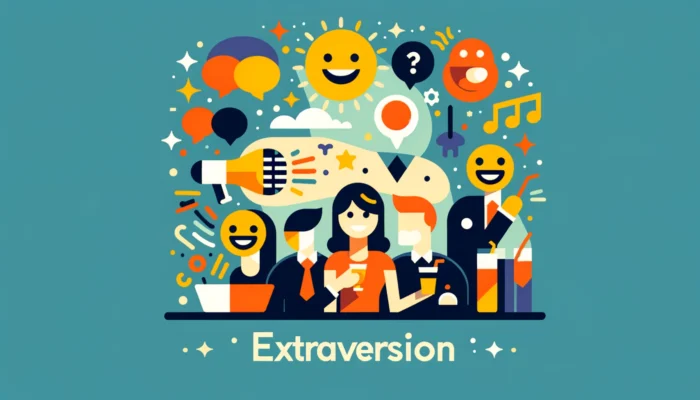In the realm of workplace dynamics, understanding and utilizing the Big Five personality traits, with a particular focus on extraversion, can significantly enhance team performance and individual job satisfaction. Extraversion, a key dimension in the Big Five model, manifests differently in introverts and extroverts but offers unique strengths that, when combined, can create a balanced and dynamic work environment. Here’s how professionals can harness the power of extraversion traits within the Big Five framework to foster a synergistic workplace.
Introverts: Harnessing the Depth of Extraversion
Deep Focus and Reflective Strengths: Introverts, though lower on the extraversion scale of the Big Five, bring profound depth to their work through their ability to concentrate and reflect. By embracing tasks that require sustained attention and careful thought, introverts can produce exceptional, in-depth work, showcasing the quieter side of extraversion’s energy.
Strategic Communication: Leveraging their contemplative nature, introverts can enhance workplace communication. Their thoughtful approach ensures that when they do speak up, it’s meaningful and impactful, aligning with the reflective aspects of the Big Five’s extraversion traits.
Autonomous Innovation: The independence introverts enjoy is a boon for creativity and problem-solving. Employers can capitalize on this by providing them with autonomy, allowing introverts to explore solutions deeply and thoroughly, a testament to the introspective side of extraversion.
Extroverts: Channeling Extraversion for Collective Success
Networking and Collaboration: Extroverts embody the social aspects of the Big Five’s extraversion, excelling in creating and maintaining workplace relationships. Their natural propensity for dialogue and collaboration can foster a vibrant team atmosphere and drive collective success.
Adaptive Leadership: The adaptability and energy extroverts bring, key components of the Big Five’s extraversion trait, make them natural leaders in dynamic work environments. They can effectively navigate change, inspire their teams, and motivate others towards shared goals.
Creating an Energetic Workplace: The enthusiasm and outward energy of extroverts can significantly boost team morale and productivity. By setting a positive tone, they encourage a lively, engaging work culture that promotes active participation and creativity.
Synergistic Strategies for Introverts and Extroverts
Balanced Team Dynamics: Integrating the strengths of both personality types into team projects can lead to a harmonious balance where innovation thrives. For instance, extroverts can spearhead communication and engagement efforts, while introverts concentrate on the analytical and contemplative aspects, each playing to their strengths within the Big Five framework.
Diverse Leadership Models: A leadership approach that values both introverted and extroverted strengths can lead to more inclusive and effective management strategies. By recognizing the value each type brings, organizations can create a more adaptable and comprehensive leadership style.
Cross-Learning Opportunities: Facilitating environments where introverts and extroverts can learn from each other enriches personal growth and development. This not only enhances individual skill sets but also promotes a deeper understanding and appreciation of the diverse ways the Big Five’s extraversion trait can manifest in the workplace.
By embracing the diverse strengths that introverts and extroverts bring to the table, especially through the lens of the Big Five’s extraversion dimension, organizations can foster a more inclusive, innovative, and productive work environment. This approach not only leverages the unique qualities of each personality type but also underscores the importance of diversity in driving workplace success.
